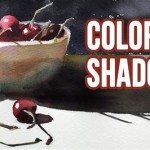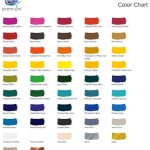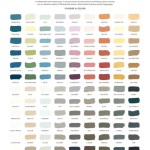```html
What Color to Paint My Wood Fence: A Comprehensive Guide
The selection of the appropriate color for a wood fence significantly impacts both the aesthetic appeal and the longevity of the structure. This choice extends beyond mere personal preference and necessitates careful consideration of factors such as the surrounding landscape, architectural style of the property, the type of wood used for the fence, and the desired level of maintenance. A well-chosen color can enhance curb appeal, complement existing outdoor features, and provide increased protection against the elements.
Before embarking on the painting process, a thorough evaluation of the existing conditions is crucial. This includes assessing the current state of the wood, identifying any areas of damage or deterioration, and determining the type of previous coating, if any. Proper preparation, such as cleaning, sanding, and priming, is essential for ensuring optimal adhesion and a long-lasting finish. Failure to adequately prepare the surface can result in peeling, cracking, and other forms of coating failure, ultimately shortening the lifespan of the paint job.
Understanding the Impact of Color Psychology
Color psychology plays a substantial role in how individuals perceive and react to their surroundings. Certain colors evoke specific emotions and associations, making it important to understand these effects when selecting a fence color. For instance, lighter colors, such as white or light gray, can create a sense of openness and spaciousness, making a smaller yard feel larger. These colors also tend to reflect more sunlight, which can help to keep the fence cooler during hot weather. Conversely, darker colors, such as brown or black, can create a feeling of enclosure and privacy. However, they also absorb more heat, potentially leading to increased expansion and contraction of the wood, which can contribute to cracking and warping over time.
Furthermore, the surrounding landscape should be taken into account. A fence color that clashes with the natural environment can be jarring and detract from the overall aesthetic. For example, a bright, artificial color might look out of place in a rustic setting with lots of natural foliage. In such cases, earth tones and natural wood stains are often a more appropriate choice. Similarly, the architectural style of the house should be considered. The fence color should complement the house's exterior, creating a cohesive and harmonious look. A modern home might benefit from a sleek, contemporary color like gray or black, while a traditional home might look better with a classic white or beige fence.
Considering Practical Factors: Durability and Maintenance
Beyond aesthetics, the practical aspects of color selection are equally important. Darker colors, while visually appealing to some, tend to fade more quickly in direct sunlight compared to lighter colors. This is because darker pigments absorb more UV radiation, which can break down the chemical bonds within the paint and cause it to degrade over time. This can lead to premature fading and the need for more frequent repainting.
Lighter colors, on the other hand, tend to show dirt and mildew more readily than darker colors. This means that a lighter-colored fence might require more frequent cleaning to maintain its appearance. The choice between a darker and lighter color, therefore, involves a trade-off between fade resistance and ease of maintenance. The climate also plays a significant role. In areas with high levels of humidity, mildew growth is more prevalent, making lighter colors a less desirable option unless they are specifically formulated with mildew-resistant additives.
The type of paint used also influences the durability and maintenance requirements. Acrylic latex paints are a popular choice for wood fences due to their flexibility, durability, and ease of application. Oil-based paints offer excellent adhesion and resistance to moisture, but they are more prone to fading and cracking over time. Choosing a high-quality paint from a reputable manufacturer is essential for ensuring a long-lasting and attractive finish. Furthermore, the paint should be specifically formulated for exterior use and should be compatible with the type of wood used for the fence.
Exploring Popular Color Options and Their Applications
Several color options are commonly used for wood fences, each offering its own unique aesthetic and practical advantages. White is a classic choice that provides a clean and bright look, making it a versatile option for a variety of architectural styles. White fences are particularly well-suited for homes with traditional or cottage-style architecture. However, as previously mentioned, white fences require more frequent cleaning to maintain their pristine appearance.
Gray is another popular choice, offering a more modern and sophisticated look. Gray fences can complement a wide range of architectural styles, from contemporary to transitional. Light gray tones can create a sense of openness, while darker gray tones can provide a more dramatic and private feel. Gray is also a relatively neutral color that blends well with the surrounding landscape.
Brown, particularly natural wood stains, is a timeless choice that complements the natural beauty of the wood. Brown fences blend seamlessly with the surrounding environment, creating a harmonious and organic look. Natural wood stains also allow the wood grain to show through, adding to the fence's visual appeal. However, wood stains do not provide as much protection against the elements as solid-color paints, so they may require more frequent reapplication.
Black is a bold and dramatic choice that can create a striking visual statement. Black fences are particularly well-suited for modern homes with clean lines and minimalist design. Black can also create a sense of privacy and enclosure. However, as previously mentioned, black fences absorb more heat than lighter colors, which can contribute to cracking and warping over time. Black paint also tends to fade more quickly in direct sunlight.
Beyond these common choices, a wide range of other colors can be used for wood fences, allowing for greater personalization and customization. Earth tones, such as beige, tan, and olive green, are excellent choices for creating a natural and understated look. These colors blend well with the surrounding landscape and provide a sense of tranquility. Pastel colors, such as light blue, pink, and lavender, can add a touch of whimsy and charm to a garden setting. However, pastel colors may not be suitable for all architectural styles and may require more frequent repainting due to their tendency to fade.
Ultimately, the best color for a wood fence depends on a variety of factors, including personal preference, the surrounding landscape, the architectural style of the property, and the desired level of maintenance. By carefully considering these factors, individuals can select a color that enhances the aesthetic appeal of their outdoor space and provides long-lasting protection for their fence.
```
Fence Painting Ideas That Will Make The Difference

Fence Paint Color Ideas To Boost Curb Appeal Wow 1 Day Painting

Fence Painting Cost Guide 2024 Staining Checkatrade

Choosing The Right Colour For Your Fence Makeovers

Fence Paint Color Ideas To Boost Curb Appeal Wow 1 Day Painting

Tips For Choosing Paint Color Your Fence Pentagon

What Color Should I Stain My Wood Fence Olympic

Top 10 Wonderful Timber Fence Colors For 2025 Pentagon

Wooden Fence Stain Colors That Will Wow My Neighbors Olympic

22 Wood Fence Stain Colors How To Choose The Right One
Related Posts








